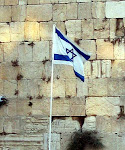February 25, 2009 -- New York, NY -- BBC Wildlife Magazine, the world's best-selling natural history and environmental magazine, has named Israel’s Hula Lake Park one of the most outstanding sites in the world for nature observation and photography.
 The Jewish National Fund (JNF) park, home to millions of migrating cranes each winter, was ranked 9th on a list of 20 exceptional nature sites chosen by 300 international experts including scientists, photographers and television producers.
The Jewish National Fund (JNF) park, home to millions of migrating cranes each winter, was ranked 9th on a list of 20 exceptional nature sites chosen by 300 international experts including scientists, photographers and television producers. In the article announcing the winning sites, acclaimed Scottish nature photographer Neil Benway described his visit to Hula Lake, where he sat amidst a flock of 15,000 cranes, as “an experience of a lifetime.”
Located in the Galilee, Hula Lake is one of the most important bird-watching sites in the world. Hundreds of thousands of visitors are drawn to the Hula Valley Crane Lookout to observe white cranes on their way to Southern Africa, stopping one last time before they begin the Sahara Desert portion of their flight.
JNF has played a significant role in the development of Hula Lake Park into an international tourist attraction. In 1991, JNF, together with the Israel Land Authority, the Ministry of Agriculture, and local farmers, undertook the Hula Restoration Project to create a rich habitat that would attract cranes needing rest and nourishment during the course of their winter migration.
The major goal of this re-flooding project was to protect the water quality of the Kinneret (Sea of Galilee) by stopping erosion and preventing pollutants from flowing into Israel’s primary source of freshwater. This upgraded the agriculture and rejuvenated the ecosystem of the area, bringing back riverbank vegetation like reeds and papyrus and attracting a variety of animals that make their home among the plants.
In addition to bird watching at the Crane Lookout, visitors can bike through the park on JNF’s cycling routes or view the birds on a camouflaged tractor that pulls right up to the feeding sites. An educational center offers videos and information about the history of the Hula Valley and the many kinds of wildlife that inhabit it.
JNF also conducts ongoing research on bird migration at Hula Lake.







No comments:
Post a Comment